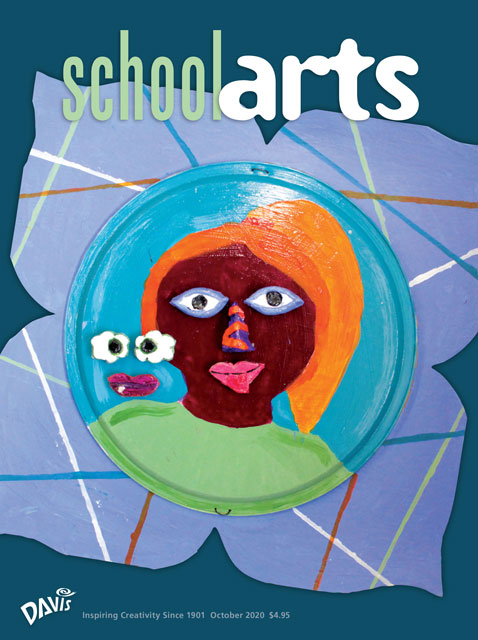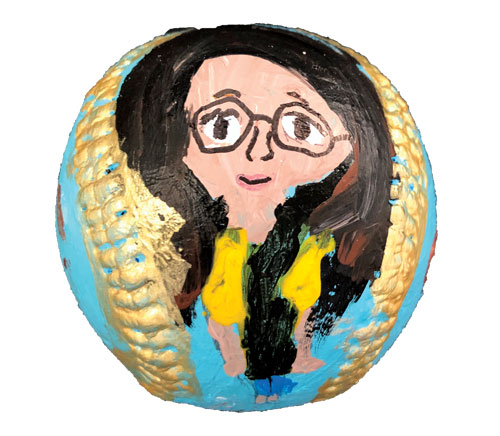 |
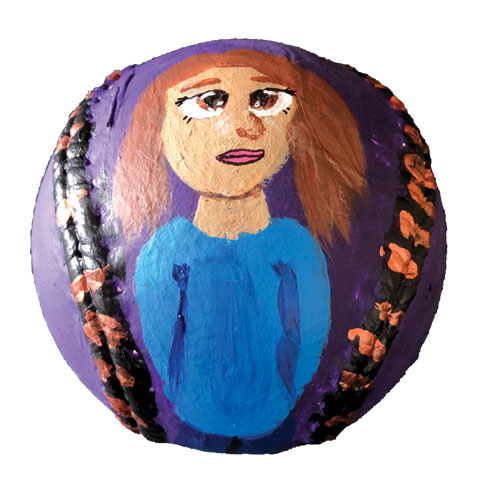 |
| Top: Alliyah. Bottom: Avalon. |
One of my good friends is a softball coach. I was visiting her one weekend and she said that she had a lot of old softballs she was looking to get rid of. My eyes instantly lit up. “I’ll take them!” I told her. She asked me what I was going to use them for and I replied, “I don’t know yet, but I’ll put them to good use.”
Sixty Softballs Later
As I drove home with the softballs rolling around in the trunk of my car (of course they didn’t stay in the box I put them in), I started to think about what I could use sixty softballs for. I immediately thought of my students.
A few years back, I attended an exhibition, Having a Ball: George Sosnak’s Striking Portraits from America’s Pastime, at the Chrysler Museum of Art in Norfolk, Virginia. Using india ink, Sosnak hand-illustrated information from the front and back of baseball cards, drawings of stadiums, greatest sports moments, championship teams, and more...directly onto baseball surfaces, so I knew it was possible to do something with this spherical item. I also Googled “painting on baseballs/ softballs” and acquired some really cool images from the BLICK Art Materials website.
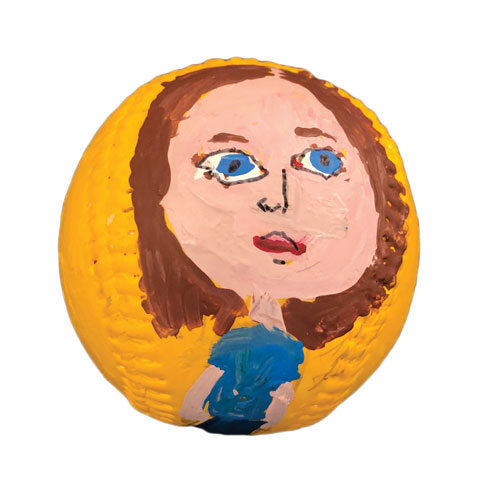 |
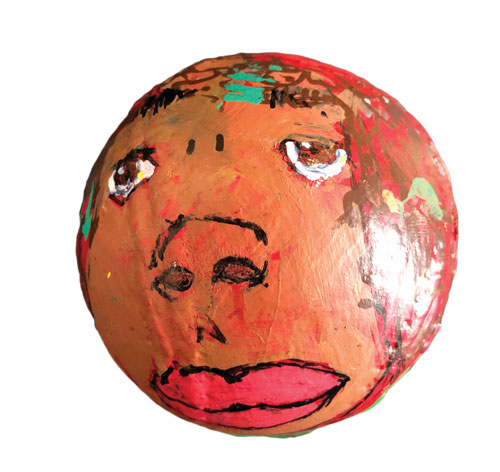 |
| Top: Harper. Bottom: Elina. |
Bringing It Back to the Classroom
My father, a baseball player and coach for much of his life, told me to “have a catch” with students and show them how to throw a softball. I thought, what an interesting hook for this project. I took my class outside.
“What are we doing out here?” they asked. “We’re going to have a catch,” I responded. “Does anyone know how to throw a softball?” A couple of students raised their hands. “Okay, we’re going to pair up and have a catch. So pick a partner.” After about ten minutes, we went back inside with our softballs.
Bringing It All to Life
Next, I showed students the work of M. C. Escher. I showed them how he distorted his imagery in his glass objects and the concave and convex shapes he created. Students each took a Christmas ball ornament and practiced drawing themselves in a distorted fashion using the object as reference. We then looked at our drawings. Students giggled as they saw each other’s new-looking faces. I told them, “When you draw yourself this way, you aren’t going to appear the same way you would when you look into a mirror. That’s the whole fun of it.” Then I told students, “You know those softballs we were playing with? Well, you’re going to draw yourselves on those softballs in the same distorted fashion as M. C. Escher.”
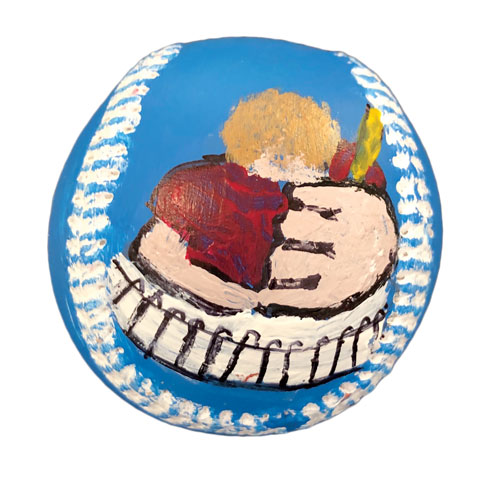 |
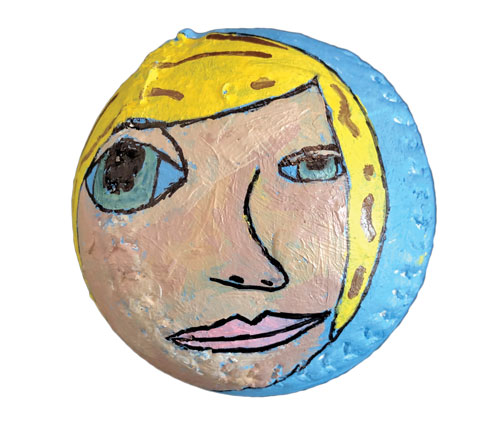 |
| Top: Thatcher. Bottom: Peyton. |
Drawing on the Round
First, students applied a layer of gesso to their softballs to cover any blemishes and to create a smooth, readyto- paint surface. After the softballs were dry, students painted them all over with one solid, bold color of acrylic paint. Once this layer was dry, they drew their self-portraits on the softball. I asked them to draw large enough to fill the entire surface. Lastly, students used acrylic paint, paint markers, and permanent markers to add color and detail. Students had a great time looking at everyone’s unique portrait style.
Reflections
Students’ spherical self-portraits exceeded my expectations. They loved the idea of going outside first to play with the softballs. They also enjoyed giggling at the exaggerated expressions their peers portrayed in their designs. The distortion helped students find the unique humor in their creations. Students really had fun with this, and the pieces displayed very nicely together, showing a glimpse of each student’s unique personality.
Leigh Drake is a visual arts teacher at Old Donation School in Virginia Beach, Virginia, and a contributing editor for SchoolArts. leigh.drake@vbschools.com
NATIONAL STANDARDS
Creating: Conceiving and developing new artistic ideas and work.
RESOURCE
George Sosnak: chrysler.org/exhibitions/george-sosnak/
View this article in the digital edition.
